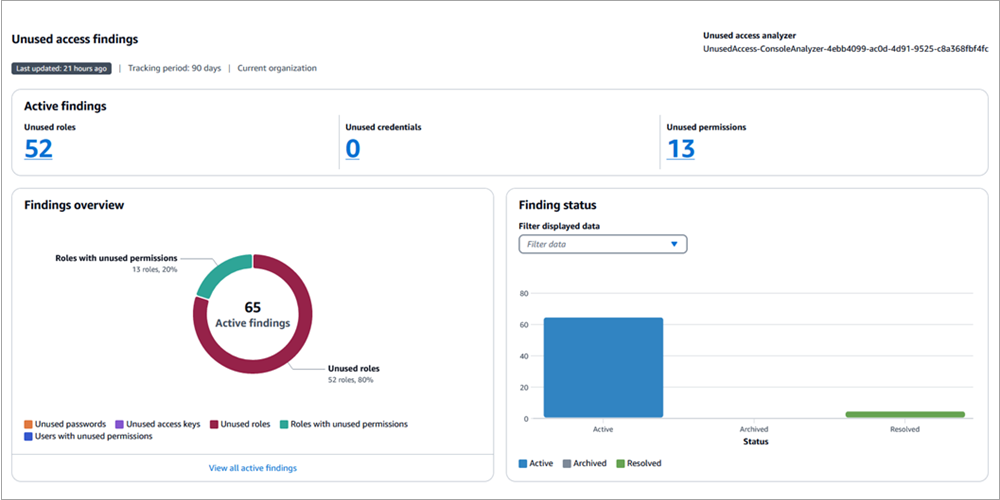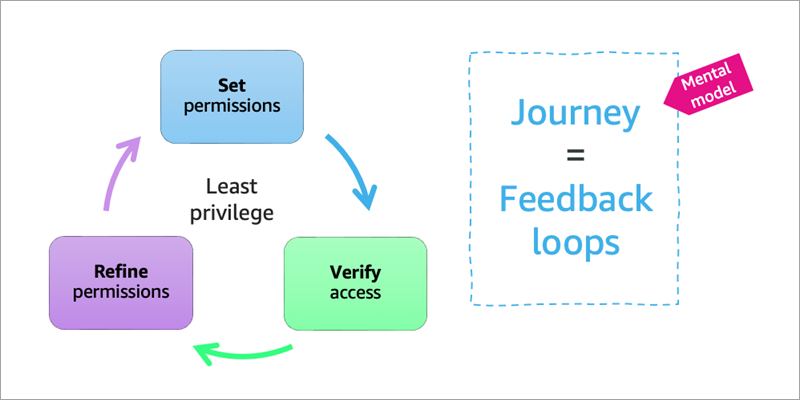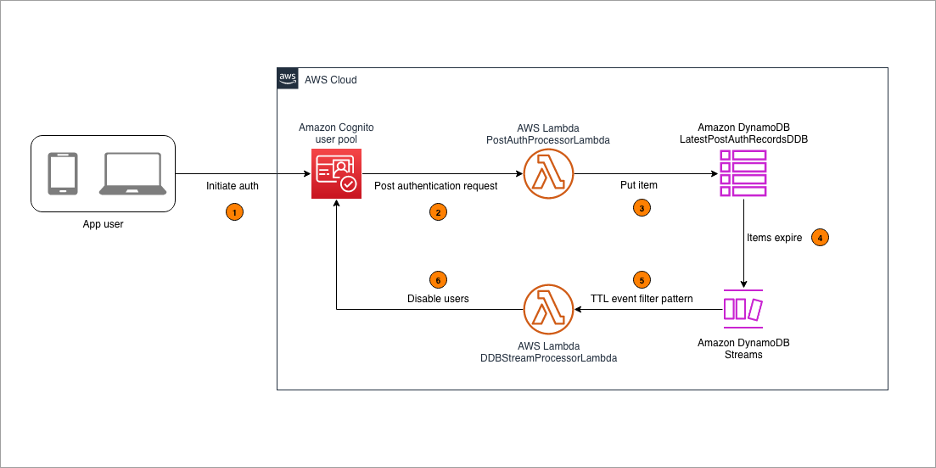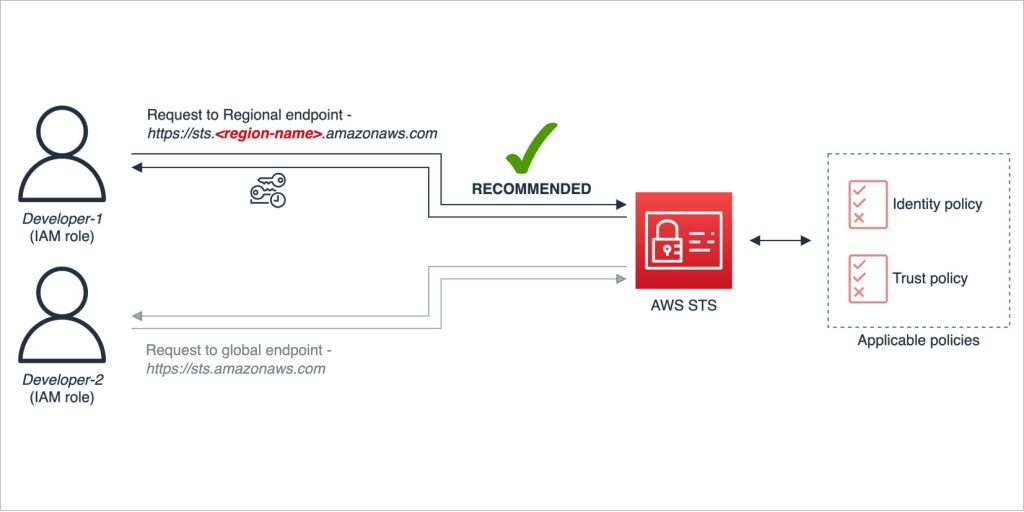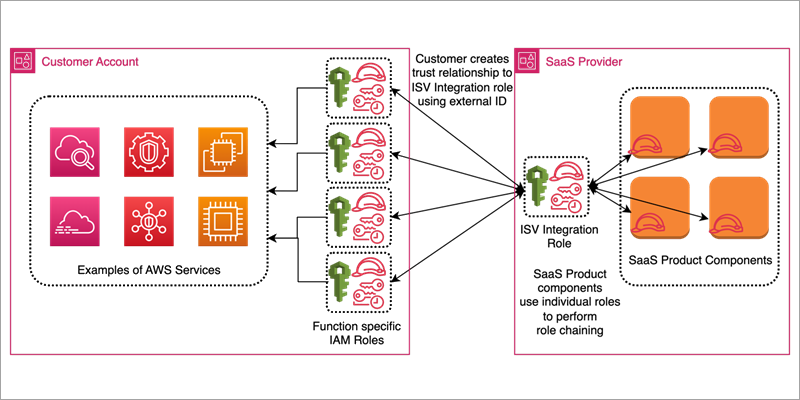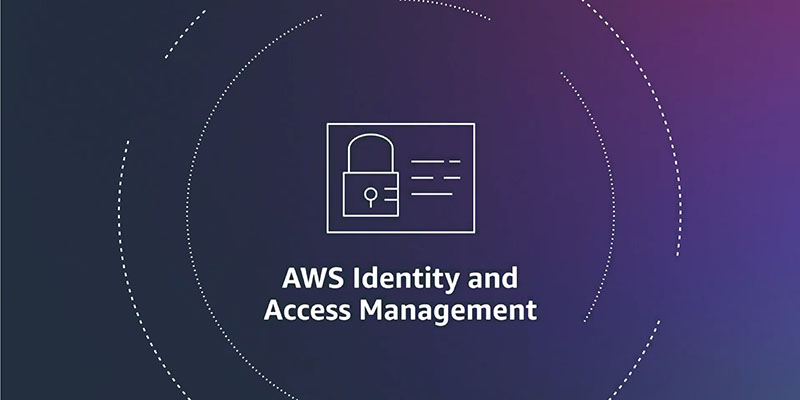AWS Security Blog
Category: AWS Identity and Access Management (IAM)
Strategies for achieving least privilege at scale – Part 2
In this post, we continue with our recommendations for achieving least privilege at scale with AWS Identity and Access Management (IAM). In Part 1 of this two-part series, we described the first five of nine strategies for implementing least privilege in IAM at scale. We also looked at a few mental models that can assist […]
Strategies for achieving least privilege at scale – Part 1
Least privilege is an important security topic for Amazon Web Services (AWS) customers. In previous blog posts, we’ve provided tactical advice on how to write least privilege policies, which we would encourage you to review. You might feel comfortable writing a few least privilege policies for yourself, but to scale this up to thousands of […]
Investigating lateral movements with Amazon Detective investigation and Security Lake integration
According to the MITRE ATT&CK framework, lateral movement consists of techniques that threat actors use to enter and control remote systems on a network. In Amazon Web Services (AWS) environments, threat actors equipped with illegitimately obtained credentials could potentially use APIs to interact with infrastructures and services directly, and they might even be able to use […]
Detecting and remediating inactive user accounts with Amazon Cognito
For businesses, particularly those in highly regulated industries, managing user accounts isn’t just a matter of security but also a compliance necessity. In sectors such as finance, healthcare, and government, where regulations often mandate strict control over user access, disabling stale user accounts is a key compliance activity. In this post, we show you a […]
How to use Regional AWS STS endpoints
This blog post provides recommendations that you can use to help improve resiliency in the unlikely event of disrupted availability of the global (now legacy) AWS Security Token Service (AWS STS) endpoint. Although the global (legacy) AWS STS endpoint https://sts.amazonaws.com is highly available, it’s hosted in a single AWS Region—US East (N. Virginia)—and like other […]
How to enforce creation of roles in a specific path
May 20, 2024: This blog post has been updated with use case examples. The Optimize AWS administration with IAM paths blog post delves into the fundamental workings of the AWS Identity and Access Management (IAM) path feature. This post explores how you can use IAM paths to strike a balance between centralized IT and development […]
How to improve cross-account access for SaaS applications accessing customer accounts
Several independent software vendors (ISVs) and software as a service (SaaS) providers need to access their customers’ Amazon Web Services (AWS) accounts, especially if the SaaS product accesses data from customer environments. SaaS providers have adopted multiple variations of this third-party access scenario. In some cases, the providers ask the customer for an access key […]
Use IAM Roles Anywhere to help you improve security in on-premises container workloads
This blog post demonstrates how to help meet your security goals for a containerized process running outside of Amazon Web Services (AWS) as part of a hybrid cloud architecture. Managing credentials for such systems can be challenging, including when a workload needs to access cloud resources. IAM Roles Anywhere lets you exchange static AWS Identity […]
How to use the PassRole permission with IAM roles
iam:PassRole is an AWS Identity and Access Management (IAM) permission that allows an IAM principal to delegate or pass permissions to an AWS service by configuring a resource such as an Amazon Elastic Compute Cloud (Amazon EC2) instance or AWS Lambda function with an IAM role. The service then uses that role to interact with […]
Upcoming improvements to your AWS sign-in experience
Starting in mid-2024, Amazon Web Services (AWS) will introduce a series of UI improvements to the AWS sign-in pages. Our primary focus is to revamp the UI, especially the root and AWS Identity and Access Management (IAM) user sign-in page and switch role page. With these design updates, we aim to facilitate smoother transitions and […]
